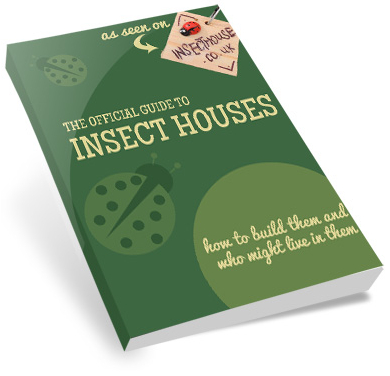Insects, what are they?
Insects are also known as invertebrates, and are sometimes called minibeasts (although not all minibeasts are insects). There are more than 800,000 different types of insect on our planet.
Insects are called invertebrates because they have no backbones. Instead, they have an exoskeleton or shell which protects and holds in the insect’s organs. Many baby insects, like ladybirds, mosquitos and dragonfly larva, must shed their exoskeleton before they can become an adult.
The parts of an insect is made up of the Head, Thorax and Abdomen. The thorax is the middle section and the abdomen is the end section of an insect’s body.
Insects have six legs attached to their thorax. These legs are made up of jointed segments. Many insects have wings and these are also attached to the thorax. A colouring in diagram of the parts of an insect can be found here.
The abdomen contains all the important organs like the respiratory system, heart digestive system and reproductive system.
An insect has a pair of antennae on its head and a pair of special eyes called compound eyes. Compound eyes are covered with lots of tiny lenses insect eyes have up to 28,000 lenses, which are arranged hexagonally, and which can give a full 360° field of vision. Humans do not have compound eyes, we only have one lens in each eye. A fly has about 4,000 lenses in one eye, which means insects have very good eyesight which is why they are hard to swat!
| Terrestrial Invertebrates |
Freshwater Invertebrates |
Marine Invertebrates |
| Woodlouse, silver-fish, mayflies, dragonflies, cockroaches, earwigs, grasshoppers, crickets, stick insects, bedbugs, Beetles, ant-lions, lacewings, true flies, craneflies, midges, hoverflies, fleas & lice, moths and butterflies, sawflies, parasitic wasps, bumblebees, bees, wasps, ants, centipedes & millipedes, scorpions, spiders, ticks & mites, aphids & cicadas, Earthworms & leeches, Snails and slugs, Round worms | tadpole shrimps, water fleas, crabs, shrimps & freshwater crayfish, polyps, hydras & jellyfish, snails & bivalves, flatworms, flukes & tapeworms, common sponges | water fleas, barnacles, crabs, lobsters & krill, polyps, hydras, jellyfish, corals & anemones, feather-stars, starfish, sea-urchins & sea-cucumbers, snails and slugs, bivalves, tusk-shells, squids & octopuses, flatworms, flukes & tapeworms, common sponges, sea-squirts |


